Climate and Ecosystems Crisis
A Transformative Change
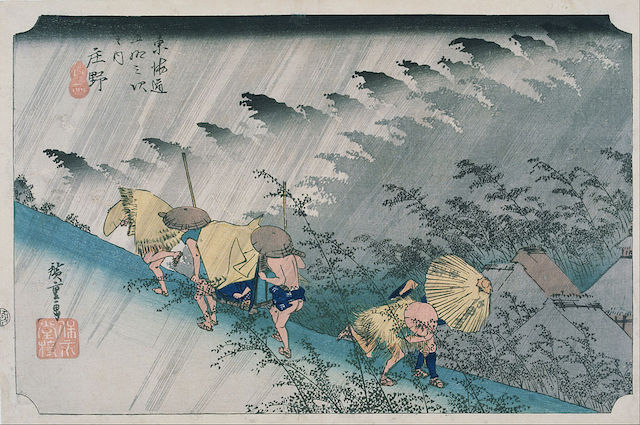
“Effective management of ecosystems is constrained both by the lack of knowledge and information about different aspects of ecosystems and by the failure to use adequately the information that does exist in support of management decisions.”
(Millennium Ecosystem Assessment, 2005, Summary for Decision-makers – MA 2005, p. 23)
Stability – Crisis – Change
Deep changes in processes between and within Earth’s subsystems – in the atmosphere, geosphere, hydrosphere and biosphere – are defining the current climate crisis.
Threats of ever deeper natural disorder are starting to make humans aware that Nature cannot find an equilibrium when continuously subjected to extraction and that a transformative change in the approach to nature is urgently needed.
Multiple climate hazards will occur simultaneously, and multiple climatic and non-climatic risks will interact, resulting in compounding overall risk and risks cascading across sectors and regions. Some responses to climate change result in new impacts and risks. (high confidence)
(IPCC, Working Group II contribution to Sixth Assessment Report, Climate Change 2022. Impacts, Adaptation and Vulnerability. SPM.B.5)
Many natural systems are near the hard limits of their natural adaptation capacity and additional systems will reach limits with increasing global warming (high confidence).”
(IPCC, Climate Change 2022, Impacts, Adaptation and Vulnerability, 2022 – IPCC 2022, SPM.C.3.3)
Nature is in a state of crisis. The five main direct drivers of biodiversity loss – changes in land and sea use, overexploitation, climate change, pollution, and invasive alien species (IPBES, The global assessment on Biodiversity and Ecosystem services. Summary for policy makers, B) – are forcing Nature into rapid retreat with almost three quarters of the Earth now altered. Climate change accelerates and aggravates pressures on Nature while, in turn, climate change itself is impacted by the loss and impaired health of the biosphere.
We humans have developed a self-understanding, a way of thinking and living ever more divorced from natural processes, entrenched in a path-dependent pattern of human behaviour, only suitable for a time when we weren’t yet able to alter Earth’s geosystems. And yet our knowledge of the biosphere is very limited and its regenerative processes and their deep functioning are only superficially understood.
Despite all our scientific efforts, we may never close the gap between our power to alter natural processes and truly deep knowledge of these processes. Therefore, the only rational answer to the deterioration of natural ecosystems is to make a transformative change in our way of thinking and living, escaping the path-dependent pattern which assumes an unbounded system of unlimited resources.
Climate change impacts and risks are becoming ever more complex and difficult to manage. Socio-economic development, unsustainable land use, inequalities, marginalisation and governance all combine to lower the defences of ecosystems and people against climate change.
Furthermore, human and natural systems are going to find it increasingly hard to adapt to the rise in global warming. Political engagement, institutional frameworks and governance processes, increased understanding of impacts and solutions and the deployment of financial resources are all enabling factors for sustaining adaptation.
“nature is in a state of crisis. The five main direct drivers of biodiversity loss – changes in land and sea use, overexploitation, climate change, pollution, and invasive alien species – are making nature disappear quickly.”
(EU Biodiversity Strategy for 2030, § 1)
Human and ecosystem vulnerability are interdependent (high confidence). Current unsustainable development patterns are increasing exposure of ecosystems and people to climate hazards (high confidence).
(IPCC, Working Group II contribution to Sixth Assessment Report, Climate Change 2022. Impacts, Adaptation and Vulnerability. SPM.B.2)
With increasing global warming, losses and damages will increase and additional human and natural systems will reach adaptation limits (high confidence).
(IPCC, Working Group II contribution to Sixth Assessment Report, Climate Change 2022. Impacts, Adaptation and Vulnerability. SPM.C.3)
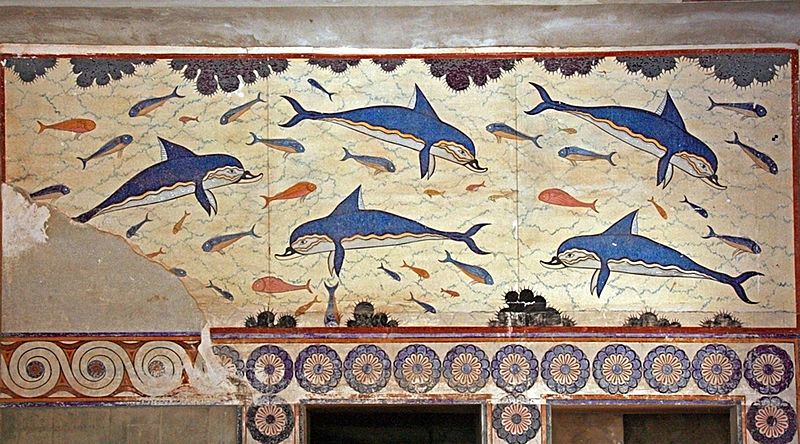
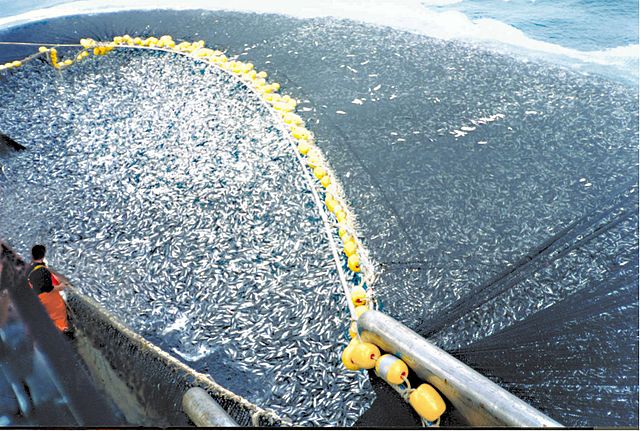
- knowledge
- purpose
- investment
- disposition of care
Enabling conditions are key for implementing, accelerating and sustaining adaptation in human systems and ecosystems. These include political commitment and follow-through, institutional frameworks, policies and instruments with clear goals and priorities, enhanced knowledge on impacts and solutions, mobilization of and access to adequate financial resources, monitoring and evaluation, and inclusive governance processes. (high confidence)
(IPCC, Working Group II contribution to Sixth Assessment Report, Climate Change 2022. Impacts, Adaptation and Vulnerability. SPM.C.5)
Drivers of change refers to all those external factors that affect nature, anthropogenic assets, nature’s contributions to people and good quality of life. They include institutions and governance systems and other indirect drivers, and direct drivers (both natural and anthropogenic).
Institutions and governance systems and other indirect drivers are the ways in which societies organize themselves and the resulting influences on other components. They are the underlying causes of environmental change that are exogenous to the ecosystem in question. Because of their central role, influencing all aspects of human relationships with nature, they are key levers for decision-making. “Institutions” encompasses all formal and informal interactions among stakeholders and the social structures that determine how decisions are taken and implemented, how power is exercised, and how responsibilities are distributed. To varying degrees, institutions determine the access to and control, allocation and distribution of the components of nature and of anthropogenic assets and their contributions to people. Examples of institutions are systems of property and access rights to land (e.g., public, common-pool or private), legislative arrangements, treaties, informal social norms and rules, including those emerging from indigenous and local knowledge systems, and international regimes such as agreements against stratospheric ozone depletion or for the protection of endangered species of wild fauna and flora. Economic policies, including macroeconomic, fiscal, monetary or agricultural policies, play a significant role in influencing people’s decisions and behaviour and the way in which they relate to nature in the pursuit of benefits. However, many of the drivers of human behaviour and preferences, which reflect different perspectives on a good quality of life, work largely outside the market system.
Direct drivers, both natural and anthropogenic, affect nature directly. “Natural drivers” are those that are not the result of human activities and are beyond human control. These include earthquakes, volcanic eruptions and tsunamis, extreme weather or ocean-related events such as prolonged drought or cold periods, tropical cyclones and floods, the El Niño/La Niña Southern Oscillation and extreme tidal events. The direct anthropogenic drivers are those that are the result of human decisions, namely, of institutions and governance systems and other indirect drivers. Anthropogenic drivers include habitat conversion, e.g., degradation of land and aquatic habitats, deforestation and afforestation, exploitation of wild populations, climate change, pollution of soil, water and air and species introductions. Some of these drivers, such as pollution, can have negative impacts on nature; others, as in the case of habitat restoration, or the introduction of a natural enemy to combat invasive species, can have positive effects.
Good quality of life is the achievement of a fulfilled human life, a notion which varies strongly across different societies and groups within societies. It is a context-dependent state of individuals and human groups, comprising access to food, water, energy and livelihood security, and also health, good social relationships and equity, security, cultural identity, and freedom of choice and action. From virtually all standpoints, a good quality of life is multidimensional, having material as well as immaterial and spiritual components. What a good quality of life entails, however, is highly dependent on place, time and culture, with different societies espousing different views of their relationships with nature and placing different levels of importance on collective versus individual rights, the material versus the spiritual domain, intrinsic versus instrumental values, and the present time versus the past or the future. The concept of human well-being used in many western societies and its variants, together with those of living in harmony with nature and living well in balance and harmony with Mother Earth, are examples of different perspectives on a good quality of life.
(IPBES, The global assessment on Biodiversity and Ecosystem services. Summary for policy makers, D2 and Appendix 1)
Knowledge is the rational foundation of our actions and so too of investments, as they both need to arise from ever deeper, research-based and evidence-based understanding of ecosystems in order to achieve integrated environmental, social and economic outcomes.
European policy recognises this need and the Commission has adopted with the Horizon Europe Strategic Plan a work programme for research and innovation to advance knowledge, build capacities and provide innovative technologies and solutions, which will strengthen the role of the European Union in the ecological transition as a solution provider for the benefit of all. More specifically, the Horizon Europe mandate for the food, bioeconomy, natural resources, agriculture and environment research programme (Cluster 6) provides opportunities to enhance transformative change and set economic activities on a path towards sustainability.
“Horizon Europe will thus advance knowledge, build capacities and provide innovative technologies and solutions to support the state and functioning of ecosystems, to ensure a clean and healthy environment and a sustainable management of natural resources that provides for our needs and contributes to climate neutrality and adaptation. Horizon Europe will focus as well on the nexus between biodiversity, water, food and health focusing on the interlinkages among the United Nations Sustainable Development Goals related to food and water security, health for all, protecting biodiversity on land and in the oceans and combating climate change.
(European Commission, Horizon Europe Strategic Plan 2021 – 2024, Key Strategic Orientations for Research & Innovation, B)
“The Horizon Europe mandate for Cluster 6 is to provide opportunities to enhance and balance environmental, social and economic goals and to set human economic activities on a path towards sustainability. The underlying paradigm of Cluster 6 is therefore the need for a transformative change of the EU economy and society in order to reduce environmental degradation, halt and reverse the decline of biodiversity and better manage natural resources while meeting the EU’s climate objectives and ensuring food and water security”.
(European Commission, Horizon Europe Work Programme 2021-2022, 9. Food, Bioeconomy, Natural Resources, Agriculture and Environment, Introduction
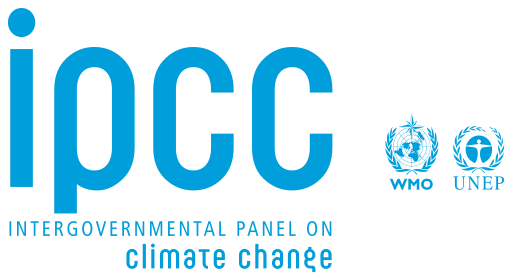
Intergovernmental Panel on Climate Change
Public domain, via Wikimedia Commons

The Intergovernmental Science-Policy Platform on Biodiversity and Ecosystem Services
Public domain, via Wikimedia Commons
Climate and biodiversity crises are directly connected to each other, and so Nature is a vital ally in the fight against climate change.
Therefore, the need for a transformative change involves nature-based solutions across three different approaches to Nature that strengthen the resilience of ecosystems and their capacity for climate adaptation: protection, restoration and sustainable multifunctional management.
“Societal goals, including those related to food, water, energy, health and the achievement of human well-being for all, mitigating and adapting to climate change and conserving and sustainably using nature, can be achieved in sustainable pathways through the rapid and improved deployment of existing policy instruments and new initiatives that more effectively enlist individual and collective action for transformative change”.
(IPBES, The global assessment on Biodiversity and Ecosystem services. Summary for policy makers, D)
Globally and also in the EU there are legal frameworks, strategies and action plans to protect nature and restore habitats and species. But, generally, protection has been incomplete, restoration has been small-scale, and their implementation and enforcement have been limited. Nature can be conserved, restored and used sustainably while, at the same time, prompt and coordinated actions promoting transformative change should address other societal goals.
Purpose addresses the question of what we want to achieve and why. Are we really convinced that an urgent transformative change in our approach to nature and forest ecosystems is unavoidable? Are we ready to start, join together and carry through this transformative change? Are we ready to commit to this bold transformative change ?
Internationally agreed environment-related goals and targets are required to defend the world’s environment, above all when having to deal with pressures from frequent contradictions or conflicts over the multifunctional use of resources.
The EU Biodiversity Strategy clearly addresses the need to be more ambitious on nature restoration. This ambition is recognised by the Horizon Europe Strategic Plan in its definition of a work programme for research and innovation with a focus on halting biodiversity decline, protecting and preserving ecosystems and managing natural resources in a sustainable way. This part of the Plan aims to achieve a more sustainable bio-based, climate-neutral, circular, non-toxic and competitive economy.
“The global environment can be safeguarded through enhanced international cooperation and linked, locally relevant measures. The review and renewal of internationally agreed environment-related goals and targets, based on the best available scientific knowledge and the widespread adoption and fundingof action on conservation, ecological restoration and sustainable use by all actors, including individuals, are key to this safeguarding”.
(IPBES, The global assessment on Biodiversity and Ecosystem services. Summary for policy makers, D1)
“Human activities create pressures on natural resources that go far beyond sustainable levels, affecting ecosystems and their capacity to provide multiple services for human well- being. Natural resources are further degraded because of the impacts of climate change. Agriculture, forestry, aquaculture and fisheries, food and bio-based systems are of particular concern. They have a profound impact on environmental and climate changes and at the same time are particularly affected by them. The European Union has the ambition to halt biodiversity decline, protect and preserve ecosystems, and manage natural resources on land and sea in a sustainable way, thereby ensuring food and nutrition security as well as a clean and healthy environment for all while contributing to climate neutrality and adaptation”.
(European Commission, Horizon Europe Strategic Plan 2021 – 2024, Key Strategic Orientations for Research & Innovation, B)
“The European Union has the ambition to substantially reduce greenhouse gas emissions by 2030 and to become climate neutral by 2050 and turn into a more sustainable bio-based, climate-neutral, circular, non-toxic and competitive economy. This requires unprecedented changes in the way we produce, trade, build, move around and consume, which will spur our technological, economic and societal transformation and contribute to a green recovery”.
(European Commission, Horizon Europe Strategic Plan 2021 – 2024, Key Strategic Orientations for Research & Innovation, C)
Investment is purpose and knowledge driven allocation of resources, which in turn is the initial step of conscious deliberate human intervention on the environment such as extracting resources, planting trees or constructing buildings or powerplants.
Within this perspective, the Horizon Europe programme will help deliver on both the different dimensions of the European Green Deal, the European Union’s growth strategy, as well as position Europe as a technological and industrial leader in the green transition.
As stated by the Bank for International Settlements, central banks, regulators and supervisors have increasingly recognised climate change as a source of major systemic financial risks. But long-term sustainability extends to other human-caused environmental degradations such as biodiversity loss. Indeed, the deep uncertainty calls for structural transformation of the global socioeconomic system without which the maintenance of financial stability will have limited chances of success.
Furthermore, IPBES states that a key component of sustainable pathways is the evolution of global financial and economic systems to build a global sustainable economy, steering away from the current, limited paradigm of economic growth.
“Climate change poses an unprecedented challenge to the governance of socioeconomic systems. […] Over the past few years, central banks, regulators and supervisors have increasingly recognised that climate change is a source of major systemic financial risks. […] the development and improvement of forward-looking risk assessment and climate-related regulation will be essential, but they will not suffice to preserve financial stability in the age of climate change: the deep uncertainty involved and the need for structural transformation of the global socioeconomic system mean that no single model or scenario can provide sufficient information to private and public decision-makers. […]
Financial and climate stability are two increasingly interdependent public goods. But, as we enter the Anthropocene (Annex 4), long-term sustainability extends to other human-caused environmental degradations such as biodiversity loss, which could pose new types of financial risks (Schellekens and van Toor (2019)). Alas, it may be even more difficult to address these ecological challenges. For instance, preserving biodiversity (often ranked second in terms of environmental challenges) is a much more complex problem from a financial stability perspective, among other things because it relies on multiple local indicators despite being a global problem (Chenet (2019b))”.
(Bank for International Settlements, The Green Swan. Central banking and financial stability in the age of climate change, 5. Conclusion – Central banking and system resilience, 2020)
“That implies incorporating the reduction of inequalities into development pathways, reducing overconsumption and waste and addressing environmental impacts, such as externalities of economic activities, from the local to the global scales. Such an evolution could be enabled through a mix of policies and tools (such as incentive programmes, certification and performance standards) and through more internationally consistent taxation, supported by multilateral agreements and enhanced environmental monitoring and evaluation. It would also entail a shift beyond standard economic indicators such as gross domestic product to include those able to capture more holistic, long-term views of economics and quality of life.”
(IPBES, The global assessment on Biodiversity and Ecosystem services. Summary for policy makers, D10)
“Horizon Europe investments will help deliver on the different dimensions of the European Green Deal, the European Union’s new growth strategy. […] Through these investments, the European Union will contribute to digitally transforming the EU industry and to make the EU climate-neutral by transitioning all economic sectors. This will boost the role of the European Union as a solution provider for the benefit of all and position Europe as a technological and industrial leader in the green transition”.
(European Commission, Horizon Europe Strategic Plan 2021 – 2024, Key Strategic Orientations for Research & Innovation, C)
Knowledge, purpose and investment will not alone achieve the aim of sustainable human living within Earth’s physical boundaries, if they do not arise from a disposition of care.
Without a common disposition of care, just purpose, well oriented knowledge and investments will all be put under constant pressure and potentially forced to yield to special vested interests, and ultimately remain entrenched in the path-dependent pattern of human behaviour.
The evidence shows that scientific knowledge doesn’t go hand in hand with human consciousness, culture and living patterns. The evidence shows that a deep rift divides scientific knowledge about the consequences of anthropisation and the living patterns that have produced and are producing these consequences.
Environmental sciences coined a few decades ago the term “Ecosystem Services”: it was the conceptual and linguistic emergence of accumulated scientific knowledge about the environment. Next to the system approach to earth sciences, resulting in the word “Ecosystem”, has been added the word “Services” to describe the services which ecosystems provide to humans.
This was a major leap forward in scientific knowledge about the environment, highlighting the fact that what humans receive from nature is no longer taken for granted.
“Services”, referred to ecosystems, is obviously a metaphor, expressing the fact that what humans receive from nature is the result of natural processes, requiring time, energy and the presence of a multitude of elements and extremely sophisticated, often unknown structures.
“Since current structures often inhibit sustainable development and actually represent the indirect drivers of biodiversity loss, such fundamental, structural change is called for. By its very nature, transformative change can expect opposition from those with interests vested in the status quo, but such opposition can be overcome for the broader public good. If obstacles are overcome, a commitment to mutually supportive international goals and targets, supporting actions by indigenous peoples and local communities at the local level, new frameworks for private sector investment and innovation, inclusive and adaptive governance approaches and arrangements, multi-sectoral planning, and strategic policy mixes can help to transform the public and private sectors to achieve sustainability at the local, national and global levels”.
(IPBES, The global assessment on Biodiversity and Ecosystem services. Summary for policy makers, D)
“The recent COVID-19 pandemic makes the need to protect and restore nature all the more urgent. The pandemic is raising awareness of the links between our own health and the health of ecosystems. It is demonstrating the need for sustainable supply chains and consumption patterns that do not exceed planetary boundaries. This reflects the fact that the risk of emergence and spread of infectious diseases increases as nature is destroyed. Protecting and restoring biodiversity and well-functioning ecosystems is therefore key to boost our resilience and prevent the emergence and spread of future diseases.”
(EU Biodiversity Strategy for 2030, § 1)
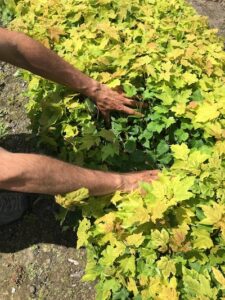
Ever since the origins of humankind, its relationship with nature has been intuitively understood as a reciprocal giving and receiving, not as mere human extraction.
Threats of ever deeper natural disorder are starting to make humans aware that Nature cannot find an equilibrium when continuously subjected to extraction.
If the fact that Nature is sustaining humanity’s daily life, was a common understanding for most humans until recent times, another common understanding was that humans have to return to nature what it needs, first of all, in terms of care, and sometimes of nourishment.
In the past, the relationship between nature and humans was based on the fundamental emotional disposition of care, where both phases of giving and receiving were biunivocal, also based on immediately recognised cyclical patterns of agriculture.
But today our common understanding of the relationship with nature is that it should serve humans in a strictly univocal direction, which basically leads to extraction.
Only very recently, some humans are wondering if this can continue, because of the ever-growing evidence that nature is suffering deep disruptions of its ecosystem functions, and is often turning from cyclical order – through abrupt changes – to states of deep disorder.
We know that human motion is based on incentives (motivation), but incentives are strictly linked to consciousness: indeed human consciousness is the underlying reality shaping our extremely anthropised world.
“Transitioning towards SCP (Sustainable Consumption and Production) requires a shift towards more sustainable lifestyles. This requires tackling the complex arena of consumer behaviour. […] Overconsumption as witnessed in North American, Europe and other industrialised countries is on the current trajectory of developing countries.”
“Sustainable consumption does not necessarily mean shopping for more sustainable alternatives; it sometimes means not shopping at all.”
“Such is our relationship with consumption (purchasing, using and throwing away): we know it is trapping us, but it has become so embedded in our psyche – to the point of being almost instinctive .- that we cannot let go.
Much of what we buy is intended to enhance our sense of identity.[…] Identity and consumption keep moving closer together.”
“A high-growth consumer society makes huge demands on the environment. However many ways that we find to manage land, seas, air, and forests in an environmentally sensitive way, increasing consumption tends to place increasing pressure on them. Yet commoning might, in a broader sense, allow us to consume more selectively, and thereby reduce our environmental impact.”
(D. Wall, The Commons in History, 2017, p.114)

Richard Dorrell / Loch Ainort fish farm, Isle of Skye, Scotland, UK / CC BY-SA 2.0 via Wikimedia Commons
Sustaining and investing in Ecosystem services
Only when “Ecosystem Services” are widely understood in a biunivocal perspective, both the services of Nature to humans and the services of humans to Nature, arising from a shared emotional disposition of care, will humans be able to live according to the needs of ecostability.
Effective conservation, restoration and mitigation activities all demand a real change in the fundamental disposition of humankind, moving from extraction to sustaining and caring for the natural ecosystems of which it is also part.
“Biodiversity loss and ecosystem collapse are one of the biggest threats facing humanity in the next decade. They also threaten the foundations of our economy and the costs of inaction are high and are anticipated to increase.”
“If democracy is to survive and thrive into the twenty-first century, climate change is the one big test that it cannot fail.”

Par Artiste inconnu — Stèle d’Ousirour, prêtre d’Amon à Thèbes Louvre Museum (détail), Mbzt (2013), CC BY-SA 3.0


